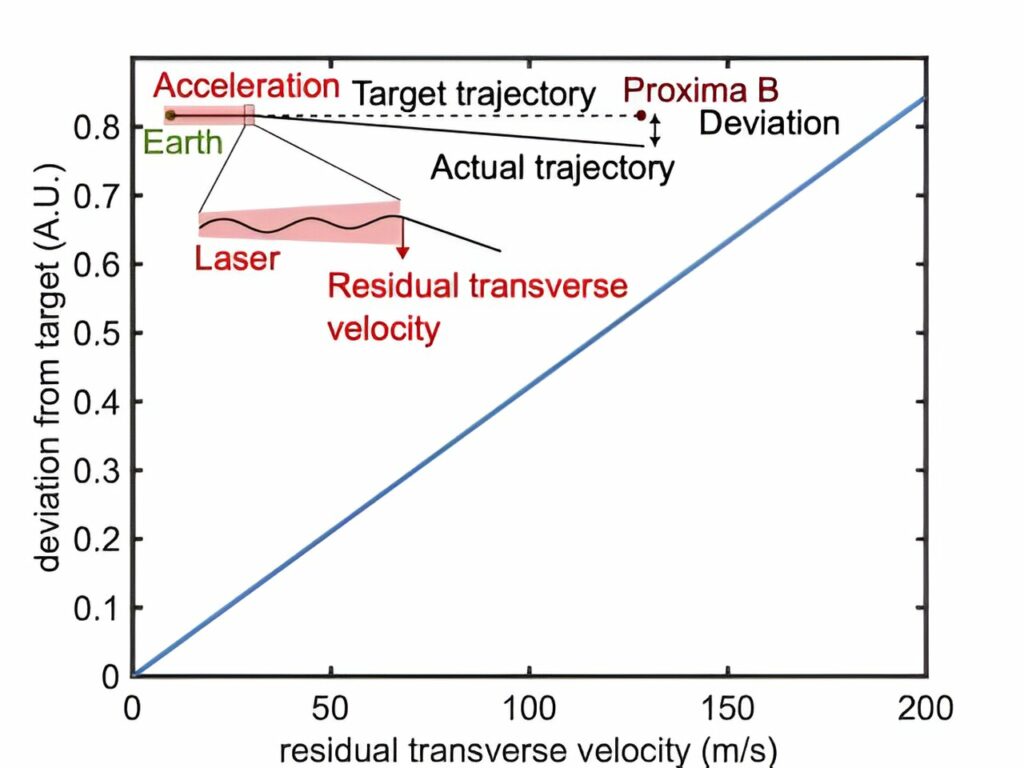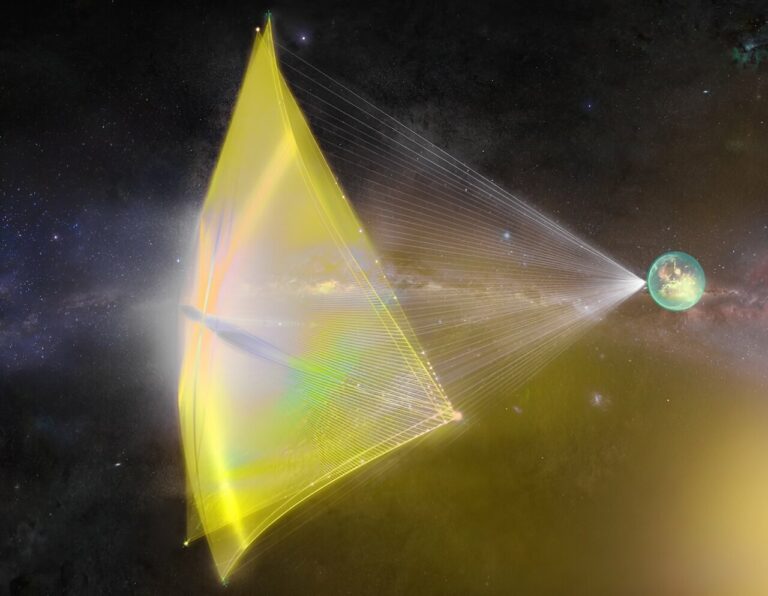What factors contribute to the stability of laser-driven lightsails?
Traveling to the nearest star is a daunting task due to the limitations of conventional rockets. The amount of fuel required would make the spacecraft excessively heavy, rendering it impractical. However, there is an alternative approach that involves traveling light. Instead of carrying fuel onboard, the idea is to attach a small starship to a large reflective sail and direct a powerful laser towards it.
By harnessing the impulse of photons, the starship can be propelled at a fraction of the speed of light. This concept, known as a lightsail mission, could potentially reach Proxima Centauri within a couple of decades. While the idea itself is straightforward, the engineering challenges it presents are substantial. Over the course of decades and light-years, even the tiniest problem can become incredibly difficult to solve.
A recent arXiv preprint paper highlights one such challenge: maintaining the balance of a lightsail on a laser beam. Although the laser can be aimed directly at a star or its projected location in the future, the lightsail will only stay on course if it is perfectly balanced.
If the sail is even slightly tilted in relation to the beam, the reflected laser light will exert a slight sideways force on the lightsail. Regardless of how minuscule this deviation may be, it will gradually amplify over time, causing the lightsail to veer further away from its intended trajectory. Achieving absolute alignment between the lightsail and the laser beam is practically impossible, necessitating a method to correct for these small deviations.
For traditional rockets, this can be done with internal gyroscopes to stabilize the rocket, and engines that can dynamically adjust their thrust to restore balance. But a gyro system would be too heavy for an interstellar lightsail, and adjustments of the beam would take months or years to reach the lightsail, making quick changes impossible. So the authors suggest using a radiative trick known as the Poynting–Robertson effect.

The phenomenon was initially examined in the early 1900s and arises from the relative movement between an object and a source of light. For instance, a dust particle orbiting the sun perceives light approaching at a slight forward angle due to its motion through sunlight. This slight forward component of light can marginally decelerate the asteroid. Consequently, dust gradually drifts towards the inner solar system due to this effect.
In this study, the researchers explore a two-dimensional model to investigate how the Poynting-Robertson effect could be utilized to maintain the trajectory of our lightsail probe. To simplify matters, they assume the light beam to be a basic monochromatic plane wave. Although real lasers are more intricate, this assumption is reasonable for a proof of concept. They then demonstrate how a simple two-sail system can utilize the effects of relative motion to maintain the stability of the spacecraft. Whenever the sails deviate slightly from the intended course, the beam exerts a corrective force to counteract it. Thus, this experiment substantiates the feasibility of the concept.
However, the researchers observe that the effects of relativity become significant over time. Previous studies have considered the Doppler effect resulting from relative motion, but this investigation reveals that the relativistic version of chromatic aberration also comes into play. To develop a realistic design, the complete relativistic effects must be taken into account, necessitating sophisticated modeling and optics.
Therefore, a lightsail remains a potential method to reach the stars. However, it is crucial to approach the engineering challenges with caution and not underestimate their complexity.
This article is republished from PhysORG under a Creative Commons license. Read the original article.
Do not forget to share your opinion with us to provide you with the best posts !




0 Comments